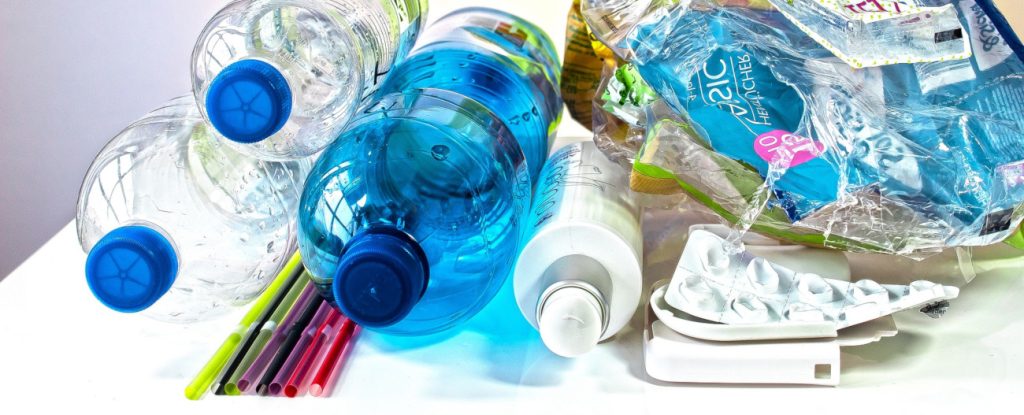In the face of mounting environmental pressures, waste accumulation, and resource scarcity, society is increasingly turning to two interlinked solutions: the development of eco‑friendly (or sustainable) materials, and the adoption of the circular economy paradigm. Together, these innovations make it feasible not just to reduce waste, but to reuse and regenerate materials in a way that can transform entire industrial systems. This shift is more than symbolic — it offers a pathway to decouple growth from resource depletion, reduce pollution, and build resilient supply chains.
This article will explore how eco‑friendly materials (especially biodegradable and compostable plastics, biomaterials, and innovative composites) intersect with circular economy principles to enable resource reuse at scale. We will examine technological advances, design strategies, challenges, and future directions, with real‑world examples and data to highlight the state of progress.
1. The Urgent Need for Reuse and Regeneration
1.1 The Limits of the Linear Economy
The traditional linear model — “take, make, use, dispose” — dominates most industrial operations today. However, this model is increasingly untenable:
- Resource Depletion: Many materials, such as metals, rare earths, and certain biomasses, have finite supply or high environmental costs for extraction.
- Waste Accumulation: Vast quantities of waste end up in landfills or incinerators, releasing greenhouse gases, toxins, and lost material value.
- Low Circularity Rates: Recent data show that despite more recycling activity, the share of global material flows that are actually circular remains extremely low. The 2025 Circularity Gap Report estimated just 6.9% of materials used globally come from recycled sources.
- Imbalanced Resource Use: While consumption and production rise, recycling systems and infrastructure lag behind, making it impossible to keep pace.
These realities underscore that recycling alone is not sufficient; to meaningfully increase resource reuse, we need materials and systems that are designed for circularity from the start.
1.2 The Role of Materials Innovation
Eco‑friendly materials (biodegradable polymers, biomaterials, upcycled composites, etc.) offer new prospects:
- They can reduce environmental harm by breaking down safely if not recovered.
- They can be designed for recyclability or compostability, thereby fitting into circular systems.
- They stimulate new value chains, where waste becomes feedstock for new products.
But to unlock that potential, materials must align with circular economy strategies: repair, reuse, remanufacture, recycling, and regeneration.
2. Eco‑friendly Materials: Types, Mechanisms, and Examples
2.1 Biodegradable and Compostable Polymers
2.1.1 Definitions and Distinctions
- Biodegradable polymers are designed to break down by biological activity (microbes, enzymes) into natural substances (CO₂, water, biomass) under suitable conditions.
- Compostable materials take that further: they degrade within a defined timeframe in industrial or home composting settings, leaving no toxic residues.
- It is critical to note that not all biodegradable plastics degrade well in nature; some require industrial composting conditions (heat, humidity, microbes) to function properly.
2.1.2 Notable Biopolymer Families
- PLA (Polylactic Acid): Derived from cornstarch or sugarcane. Widely used in packaging, disposable cutlery, and films. Degrades under industrial composting.
- PHA / PHB (Polyhydroxyalkanoates / Polyhydroxybutyrates): Microbially produced; more fully biodegradable in natural environments.
- PBAT / PBS: Flexible biodegradable polymers used in films and blends (often with PLA) to enhance properties.
- Novel composite bioplastics: For instance, combinations of amyloid fibrils and biodegradable polymer blends are being investigated for transparent, flexible, compostable films.
2.1.3 Use Cases and Applications
- Packaging: Biodegradable films for food wraps, shopping bags, labels.
- Agriculture: Mulch films, planting pots, degradable films for soil contact.
- Single-use Items: Cutlery, straws, cups.
- Consumer goods: Textile fibers, coatings, consumer electronics housing in some cases.
2.2 Biomaterials and Bio-composites
Beyond “bio‑plastics,” there is growth in materials derived from biomass or engineered biological systems:
- Plant‑cell based composites: Materials made from cultured plant cells, compressed and engineered to match or exceed the mechanical properties of common plastics.
- Waste-based composites: Using agricultural waste, fungi, and other biomass residues to produce panels, packaging, or construction materials.
- Composite reinforcement: Embedding natural fibers (e.g., hemp, flax, bamboo) into polymers to reduce footprint and improve biodegradability.
2.3 Upcycled and Recycled Material Innovations
Even with biodegradable materials, recycling and upcycling remain essential in circular systems:
- Enzymatic recycling technologies: For example, startups are developing enzymes that break down nylon to its monomer for infinite recycling.
- Battery waste reuse: Recycling silicon scraps from electronics and solar industries into high-performance battery anodes.
- Complex plastic recycling: Techniques to chemically or chemo-mechanically recycle multilayer plastics previously considered unrecyclable.
One example is Ashaya Waste Recyclers, which applies a patented process to break down multi-layer plastics into reusable polymer blends.
3. Circular Economy: Principles, Benefits, and Integration
3.1 Fundamentals and Design Principles
At its core, the circular economy seeks to “close loops” in material flows. Key pillars include:
- Design for circularity: Products designed for easy disassembly, modularity, durability, and recyclability.
- Extend lifecycle: Repair, refurbish, remanufacture.
- Resource loops: Recycling, upcycling, composting.
- Regenerative systems: Biomass cycles, renewing soils, carbon capture.
This structural shift aims not just to minimize waste, but to embed reuse and regeneration into production systems.
3.2 Economic and Environmental Benefits
- Material savings: Reduces dependence on virgin raw materials and the environmental costs of extraction.
- Carbon reductions: Less production and waste emissions.
- New business models: Services, leasing, product-as-a-service (PaaS), take-back schemes.
- Resilience and supply security: Looping materials creates buffer against fluctuations in raw material prices and supply chain disruptions.
3.3 Current Metrics: Where We Stand
- The global circularity rate remains low (~6.9%) despite some gains in recycling.
- In the EU, the circular material use rate (share of materials coming from recycled sources) was ~11.8% in 2023 — a modest improvement but still far from targets.
- Materialflows analysis shows only ~7% of extracted raw materials globally re-enter the economic system as secondary materials.
- Some academic research suggests that if we broaden definitions (including repair, refurbishment, stock reuse), actual circularity may be higher (up to ~27% in certain metrics) — but even then, its share of GDP remains small.
These numbers are sobering: we still have huge gaps between ambition and reality.
3.4 Integration: How Eco-materials Fit into Circular Strategies
Eco‑friendly materials are not a standalone fix—they must be embedded into circular systems:
- Design for reuse or recycling: Use materials that can be effectively processed at end-of-life.
- Material selection aligned with end‑of‑life pathways: If composting is the best route, avoid non-compostable additives.
- Material traceability and labeling: To separate and sort materials accurately.
- Take-back and collection infrastructure: So eco‑materials can be recovered rather than discarded.

4. Challenges and Barriers
4.1 Infrastructure Gaps and Mismatches
- Poor or absent composting facilities for biodegradable polymers.
- Inadequate recycling capacity for novel materials.
- Mixed waste streams leading to contamination.
- Low access in developing regions.
4.2 Technical and Performance Trade-offs
- Cost: Biodegradable or bio‑based materials often cost more than petrochemical counterparts.
- Material properties: Strength, barrier properties, longevity must compete.
- Degradation mismatch: Some materials designed to degrade must remain stable during use, but degrade after. That balance is difficult.
- Compatibility with recycling systems: Some biodegradable plastics may contaminate existing recycling flows if mismanaged.
4.3 Standardization, Certification, and Consumer Trust
- Lack of global standards for compostability, degradation timelines, and labeling.
- Greenwashing risks: Some products marketed as “biodegradable” may not perform as claimed.
- Consumer confusion over disposal (e.g. whether to compost or recycle).
4.4 Economic and Scale Constraints
- Scaling novel materials often requires capital investment, which is risky without stable demand.
- Market competitiveness against cheap conventional materials.
- Dependence on subsidies, policy incentives, or regulatory mandates.
4.5 Systemic Behavior and Policy Alignment
- Without systemic change in business models, consumer behavior, and policy, materials innovation alone cannot drive transition.
- Need coordinated policies: bans on non-recyclables, incentives, Extended Producer Responsibility (EPR), support for infrastructure.
5. Real-World Examples and Case Studies
5.1 Sustainable Packaging from Waste Materials
IIT Hyderabad researchers developed a biodegradable packaging film using sewage sludge and eggshell waste, blending extracellular polymeric substances and chitosan, showing enhanced mechanical and barrier properties.
5.2 Corporate Circular Offices
In London, a new office fit-out reused 92% of the materials from previous builds, cutting embodied carbon by 75% and saving CO₂ emissions.
5.3 Automotive Circularity
Stellantis aims to generate €2B by 2030 through circular economy operations, reconditioning used parts, recycling materials (including EV batteries), and remanufacturing.
5.4 Biodegradable Material Manufacturers
SPHERE Group produces biosourced, compostable packaging and materials, integrating eco‑design into its full lifecycle.
5.5 Novel Recycling for Electronics Materials
Silicon scrap from electronics and solar industries has been upcycled into high-performance battery anode materials, closing the loop in the energy sector.
6. Strategies for Accelerating Adoption
6.1 Policy and Regulation
- Mandatory recycling targets and EPR schemes.
- Bans or taxes on unrecyclable plastics.
- Standards and certification for biodegradable, compostable materials.
- Procurement policies favoring circular and sustainable materials.
6.2 Innovation and R&D Support
- Funding for scale-up of novel eco‑materials.
- Incentives for pilot projects and infrastructure development.
- Collaborations across academia, industry, and government for material hybridization and system integration.
6.3 Business Model Transformation
- Product-as-a-service models (e.g. leasing electronics) to retain ownership and drive return flows.
- Design for disassembly and repairability.
- Take-back programs and modular designs.
6.4 Consumer Education and Behavior Change
- Clear labeling and disposal instructions.
- Incentivize circular actions (deposit refunds, pay-as-you-discard).
- Outreach on benefits of repair, reuse, and responsible disposal.
6.5 Systems Integration
- Co‑planning of recycling/composting infrastructure with product innovation.
- Cross-sector collaboration: packaging, waste management, agriculture, energy.
- Material tracing, digital product passports, and blockchain for supply chain transparency.
7. Future Outlook and Emerging Trends
- Next‑generation biopolymers: More robust, lower-cost, capable of ambient degradation.
- Enzyme and chemical recycling breakthroughs enabling indefinite recycling of polymer classes.
- Smart materials that sense and trigger safe disassembly or recycling.
- Circular design software and AI tools aiding designers in selecting optimal materials and configurations.
- Global metrics reform: shifting from input-based circularity to value-based circular models. (Some research suggests previous metrics understate true circular practices like remanufacture)
8. Conclusion
The tandem rise of eco‑friendly materials and circular economy thinking presents a compelling paradigm shift. Rather than hoping we can recycle our way out of resource constraints, we are beginning to design materials and systems so that reuse, regeneration, and value retention are embedded from the start.
But the journey is nascent. While innovations in biodegradable polymers, biomaterials, and upcycling are advancing, we still confront infrastructure deficits, scale challenges, and misaligned incentives. The relatively low global circularity rates (under 10%) highlight how much ground remains to cover.
Success will require thoughtful policy, industry leadership, collaborative models, and consumer engagement. When eco-friendly materials are matched with ecosystem-level circular systems, resource reuse becomes not just a possibility, but a scalable reality — paving the way toward sustainability, resilience, and a regenerative industrial future.












































